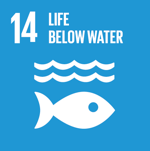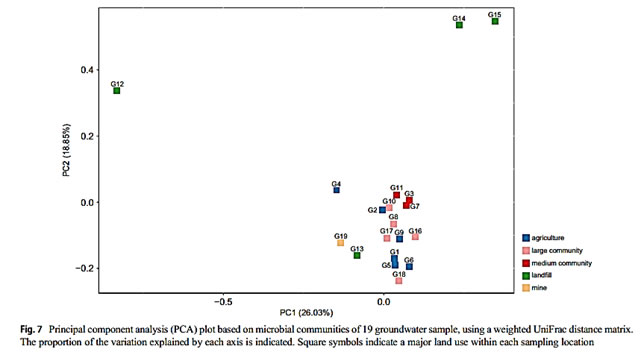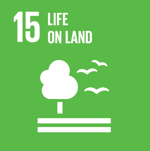
Prinpida Sonthiphand1 Siwat Ruangroengkulrith2 Wuttichai Mhuantong3 Varodom Charoensawan2,4,5 Srilert Chotpantarat6,7,8 Satika Boonkaewwan7,9
1 Department of Biology, Faculty of Science, Mahidol University, 272 Rama VI Road, Ratchathewi, Bangkok 10400, Thailand
2 Department of Biochemistry, Faculty of Science, Mahidol University, 272 Rama VI Road, Ratchathewi, Bangkok 10400, Thailand
3 Enzyme Technology Laboratory, National Center for Genetic Engineering and Biotechnology, Phahonyothin Road, Khlong Luang, Pathum Thani 12120, Thailand
4 Integrative Computational BioScience (ICBS) Center, Mahidol University, Salaya, Phuttamonthon, Nakhon Pathom, Thailand
5 Systems Biology of Diseases Research Unit, Faculty of Science, Mahidol University, Salaya, Phuttamonthon, Nakhon Pathom, Thailand
6 Department of Geology, Faculty of Science, Chulalongkorn University, Bangkok, Thailand
7 Research Program on Controls of Hazardous Contaminants in Raw Water Resources for Water Scarcity Resilience, Center of Excellence on Hazardous Substance Management (HSM), Chulalongkorn University, Bangkok, Thailand
8 Research Unit of Green Mining (GMM), Chulalongkorn University, Bangkok, Thailand
9 International Postgraduate Program in Hazardous Substance and Environmental Management, Chulalongkorn University, 9th Floor, CU Research Building, Phayathai Road, Bangkok 10330, Thailand
Groundwater ecosystems provide habitats for diverse microbial communities. The major roles of groundwater microbial communities are biodegradation of anthropogenic pollutants and driving biogeochemical processes (Flynn et al. 2013; Imfeld et al. 2011; Ramos et al. 2014). Consequently, the diversity and activity of groundwater microbial communities is directly linked to groundwater ecosystem functions. Poor groundwater quality, resulting from high levels of pollutants from agriculture, industry, municipal and industrial landfills, mining, and seawater intrusion, is one of global concerns.
Groundwater ecosystem function through natural attenuation plays a crucial role in restoration of polluted groundwater. Natural attenuation relies mainly on the ability of indigenous microorganisms to degrade pollutants. Consequently, the bioremediation of polluted groundwater requires the understanding of the diversity, abundance, and activity of the key microorganisms involved in transforming particular contaminants of interest.
In the present study, the groundwater basin of Rayong province, Thailand, was used as a surrogate groundwater system in order to explore groundwater microbial diversity impacted by anthropogenic activities. The basin is located on the east coast of the Gulf of Thailand, where agricultural and industrial activities are widespread. Other anthropogenic activities observed in this study area include community, municipal and industrial landfills, and mining.
In this study, we investigated microbial diversity in groundwater impacted by a variety of anthropogenic activities and to examine potential environmental factors that could be linked to the groundwater distribution pattern and then to shed light on the groundwater microbiome and provides a better understanding of the diversity, abundance, and dynamics of groundwater microorganisms in relation to anthropogenic activities.
The resulting a principal component analysis (PCA) indicates that major land usage within the sampling area seemed to be significantly linked to the groundwater microbial distributions. The distinct microbial pattern was observed in the groundwater collected from a landfill area. This study suggests that the combinations of anthropogenic and natural effects possibly led to a unique pattern of microbial diversity across different locations at the impacted groundwater basin.
งานวิจัยนี้สร้างฐานข้อมูลความหลากหลายทางชีวภาพของกลุ่มประชากรจุลินทรีย์ในน้ำใต้ดินบริเวณเขตเมืองที่ได้รับผลกระทบจากการกระทำของมนุษย์ เช่น การทำเกษตรกรรม การทำเหมืองแร่ และการสร้างหลุมฝังกลบขยะ รวมทั้งบ่งชี้ปัจจัยที่มีผลต่อความหลากหลายและการกระจายตัวของกลุ่มประชากรจุลินทรีย์ในน้ำใต้ดิน บ่งชี้จุลินทรีย์ที่มีบทบาทในการขับเคลื่อนวัฏจักรทางชีวธรณีเคมีและบทบาทในการย่อยสลายสารพิษที่ปนเปื้อนจากกิจกรรมของมนุษย์ องค์ความรู้และฐานข้อมูลดังกล่าวสามารถนำมาใช้ประเมินผลกระทบด้านสิ่งแวดล้อมต่อความหลากหลายของจุลินทรีย์ท้องถิ่นซึ่งจัดเป็นทรัพยากรชีวภาพของประเทศ
Financial Support
Mahidol University through the New Researcher Grant and the Faculty of Science, Mahidol University.https://link.springer.com/article/10.1007/s11356-019-05905-5



